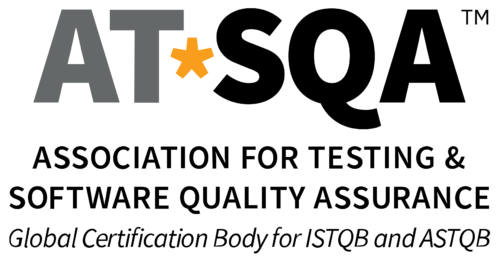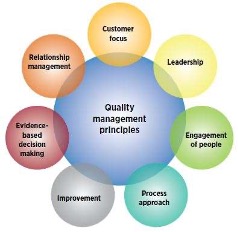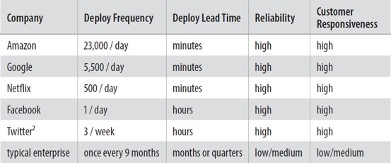Did you know that the average software application will lose nearly 80% of its daily active users within the first three days? By the 30th day, that number skyrockets to 90%.
But the best applications with the highest retention rates have learned techniques in both learnability, usability, and overall quality to capture and retain the most customers from the first day. So how do you keep customers content and make your software application worthwhile?
Through a highly competitive, user-friendly application with little to no software bugs. However, you can only guarantee this with proper quality assurance from the beginning, including software testing and software quality-related activities in all aspects of the software development process.
Before rolling out your next app, let’s go over what application creators, software developers, and software product managers need to know regarding software testing vs. quality assurance.
What is Software Testing?
Firstly, let’s examine the term software testing and its meaning. Software testing is when a testing team evaluates a software application for two main things:
- Check if it matches the set industry and company standards
- Ensure that the software functions as it should (meets requirements)
Although software testing is a significant, time-consuming step, it is only a part of software quality assurance. Software quality assurance does just that, assures the quality of the software and this includes software testing as well as many other activities.
Types of Software Testing
Thorough software testing, will reduce development costs in the long term because we all know that bugs found early costs less to fix than bugs found in production. With good software testing, you’ll find and fix bugs before launch, and improve the software’s overall performance — which, in turn, means a better customer experience.There are several types of software testing, each of which aims to answer a specific question. They include:
- Functional testing — Can the software function as expected by end users? Note that end users may not think the same as your developers.
- Localization testing — Does the software support an international brand’s cultural expectations and local language?
- Performance testing — Does the application run quickly and smoothly, without errors not matter how many users are accessing the same function?
- Security testing — Are there any loopholes within the code that would increase the risk of data breaches?
- Test automation — Can an automated software testing systematicallyfind potential errors that the development team missed? Can software test automation execute tests and save your team time?
- Usability testing — Will consumers find this application easy to use, learn,understand?
In the short term, it’s easy to get bogged down not only with details of software testing, but the costs of various software testing methods. However, in the long-run, 80% of customers uninstall poorly-designed or buggy applications. Thereforeextensive software testing can ensure that your company delivers the highest quality products, which means higher retention rates and more revenue. Why waste your own precious time by releasing software that no one keeps or uses?
Software Testing Standards and Frameworks
While many software testing professionals learned their profession through hands-on experience or the school of hard knocks, there are frameworks that help software testers learn the basics quickly and provide a foundation from which to build on. These include:
- ISO 27010
- TMMi
- TPI
- ISTQB
What is Quality Assurance?
Also called “quality control,” quality assurance (QA) is a management approach to monitor and determine that all software engineering processes and procedures follow all relevant business standards that ultimately enable you to release high quality software.
Most standards worth complying with are driven by the International Organization for Standardization (ISO), so quality testers will compare software to the current ISO standards.
ISO 9001, for example, focuses on product quality management, which includes:
- Customer focus
- Leadership
- Engagement of people
- Process approach
- Improvement
- Evidence-based decision making
- Relationship management
At the core, ISO 9001 says that you should remain customer-oriented to optimize and improve over time continually. So local or international, you’ll need to ensure you release compliant software that meets at least most of these standards, even if you’re not ISO-certified.
ISO 9001 is focused on general product quality, while ISO 25010 is focused on software product quality. Software product quality has many aspects including internal quality such as that can be proven with white box or static code analysis. It also includes external product quality such as functional quality which is normally verifed by many of the software testing types described above. Lastly, it includes software quality from the end user perspective, also referred to as software quality in use. See this post for more information on the Definition of Software Quality.
Differences Between Quality Assurance and Software Testing
Software testing and QA are similar because they are tools of quality control that support the product in the development process. Still, there are four main differences between software testing versus quality assurance.
Difference #1: Software Quality Assurance and Software Testing Have Different Objectives
Quality assurance ensures the softwaare meets the users needs, while software testing focuses on finding bugs and issues.
Every organization has set policies and standards that guide the software development process. The quality assurance process confirms that your software will meet the requirements of your users.
For example, the concept of quality assurance within the software development process suggests that software quality activities should exist throughout the process from beginning to end. Beginning with customer based requirements, also known as user stories, to the end user via customer-focused software with evidence-based usage statistics demonstrating that end users are satisfied. Your company’s QA engineers will ensure that the software meets requirements from start to finish.
On the other hand, the software testing process ensures that an application is usable and bug-free. Common issues like application response to user commands, page load time, and potential errors are discovered during the testing phase which is part of an overall quality assurance strategy.
Difference #2: Quality Assurance and Software Testing Begin At Different Times
Quality assurance begins before the code is written, while software testing begins after the code is written.
Quality assurance starts at the beginning of the development cycle with a plan determining the software to be created. The development team and the client will meet to discuss quality management procedures such as how to inspect, validate, and verify the requirementsthat help guide the creation of an application.
After the team analyzes all requirements, they will choose what tests to run and assess product quality. The team designs these tests at Stage 3 of the quality assurance process, while software testing begins at Stage 4 when the coding has begun. Software testing will include any or all of the testing types such as functional (black box), white box, performance, and security testing.
Difference #3: Quality Assurance and Software Development Life Cycle Differ
Quality assurance is a management approach, while software testing is a quality assurance strategy that enhances functionality.
Quality assurance manages the software development process by assessing standards, tools, policies, and procedures used to develop the software. This process maintains the integrity of the software and controls the workflow to keep the software development team (which also includes the software testing team) on track.
Software testing is done periodically (different types of software testing at different times) during the development cycle to ensure that the code functions properly. For example, the software developmentplan states that the software should have user profiles by Sprint 7. This would include the user stories associated with user profiles, and acceptance requirements. Software testing will confirm customers can perform these user stories. Therein lies the subtle yet big difference between a software quality assurance engineer and a software tester. While a QA engineer will start from the beginning and test the requirements to ensure that they are clear and complete and work all the way through the software development process to do whatever activities will lead to quality software, a software tester will mostly write and execute test cases. That’s certainly not to belittle the contribution of a software tester as they do find defects which is what we want, but the QA engineer strives to prevent defects rather than find them.
Difference #4: Quality Assurance and Software Testing Have Different Roles After the Software is Released
Quality assurance includes the frequency of code deployments post-release, while software testing ensures stability during upgrades.
There’s a reason why the top-performing apps continue to meet customer expectations, and it’s because they have 200 times more frequent code deployments than other software applications.
These deployments focus on two things: Testing and quality as each deployment contains incremental improvement either via bug fixes or additional features
The software quality assurance process continues to analyze software post-release to identify potential areas that need optimization, whether through routine tests or bugs raised by users.
Software testing quickly identifies problems after the software is released and fixes them. Quality assurance engineers and quality testing work like a cog, necessitating as many code deployments as needed to keep customers happy.
Software Testing and Quality Assurance Services Should Scale with Your Company
Even if you’re experiencing a healthy uptick in daily active users (DAUs), sometimes a steadily increasing customer base can affect your software’s stability — especially if you’re not prepared.
Unfortunately, an impressive 7-day run at the app store will not cushion you against massive customer exits if your application crashes because it can’t handle the traffic. In fact, app crashes cause 62% of uninstalls, leading to poor ratings and reviews.
That’s why you need a partner that scales with you. Because the more sophisticated your software grows, the more fragile it becomes.
XBOSoft has an experienced quality assurance team, with QA engineers who take time to learn and adhere to your company’s quality objectives, while deeply understanding your domain and software product. For example, we don’t just have software testers, we have domain specialists in accounting, electronic health records, loan management, and banking so that they can really test your software just as your users would. We also help perform user acceptance testing (UAT), so we can better understand how to best bring your app to life.
Conclusion
A successful software application only remains relevant and competitive through a combination of strategically applied quality assurance and software testing with deployments at a frequency that match your users demands and expectations. — but you don’t have much time to hook your consumers.
Users will take about a week before they decide to continue using your application after the first install.
Quality assurance and the software testing process are the lifeblood of your software because they maintain quality control and allow room for upgrades to best fit your consumers’ demands.
Don’t know where to start? XBOSoft offers a wide array of software testing and quality assurance services. Learn more about how our expert team can help you today.
Need Help with Your Software Testing Strategy?
Most Popular
 |
A Quick Introduction To Jira
By: Jimmy Florent |
|
 |
Visual Regression Testing Market Challenges and Opportunities
By: Philip Lew |
|
 |
Agile Testing Solution Market Continues to Grow – What Are The Key Challenges?
By: Philip Lew |
|





Leave A Comment